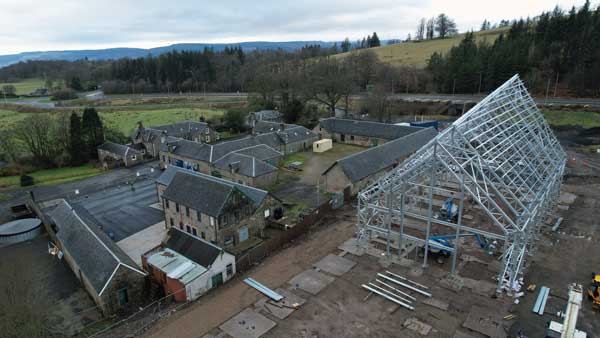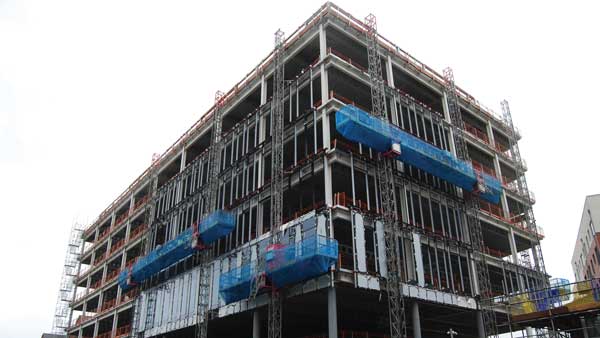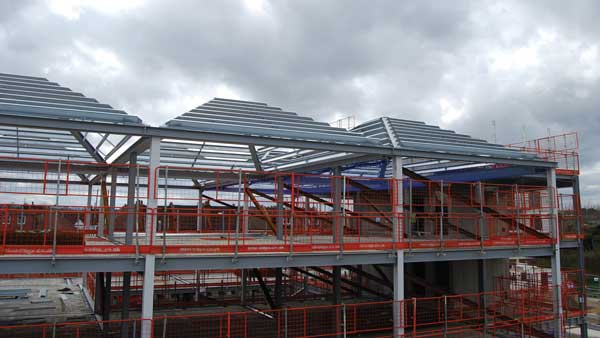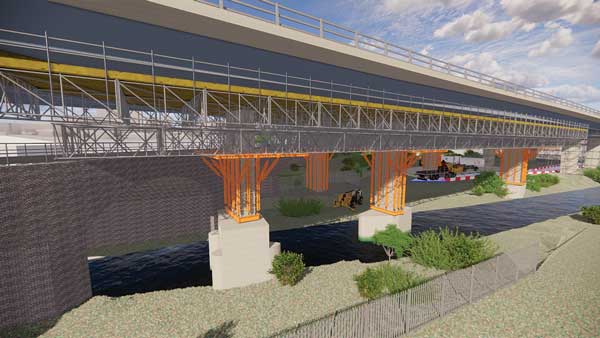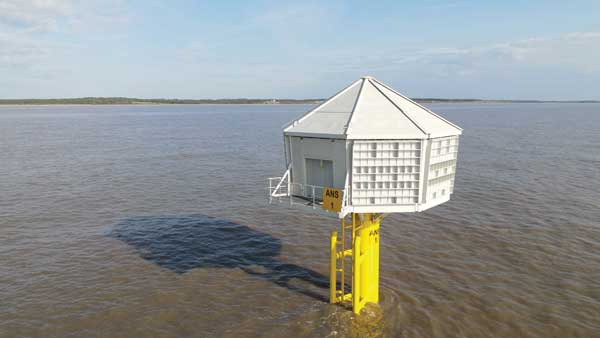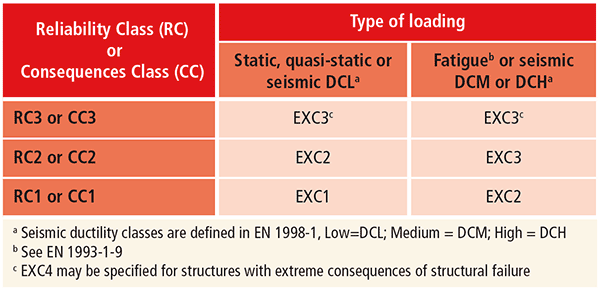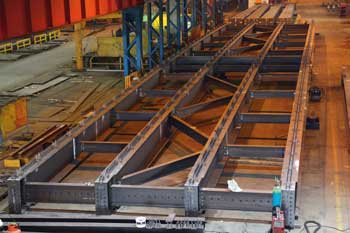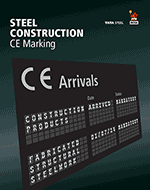Technical
Specifying the right Execution Class
 Dr David Moore explains the concept of Execution Class and provides guidance on selecting the right level of quality and assurance controls needed to ensure a structure meets the engineer’s design assumptions.
Dr David Moore explains the concept of Execution Class and provides guidance on selecting the right level of quality and assurance controls needed to ensure a structure meets the engineer’s design assumptions.
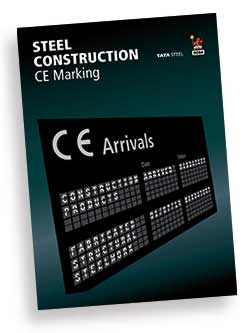 During the development of BS EN 1090-2 ‘Execution of steel structures and aluminium structures: Part 2 – Technical requirements for the execution of steel structure’ it was decided to rationalise how the standard would deal with selecting project-specific requirements.
During the development of BS EN 1090-2 ‘Execution of steel structures and aluminium structures: Part 2 – Technical requirements for the execution of steel structure’ it was decided to rationalise how the standard would deal with selecting project-specific requirements.
This resulted in a normative Annex A which groups some of the more important requirements in to four classes to facilitate a consistent selection. These classes are called ‘Execution Classes’ and are defined as ‘classified sets of requirements specified for the execution of the works as a whole, of an individual component or of a detail of a component’.
BS EN 1090-2 includes an Informative Annex B that ‘provides guidance for the choice of execution classes with respect to those execution factors that affect the overall reliability of the completed works.’
Execution class is a relatively new concept. However in recent months the constructional steelwork industry has become more aware of it, particularly, with the establishment of the Construction Products Regulation on 1st July 2013 and the introduction of the harmonised standard, BS EN 1090-1, Execution of steel structures and aluminium structures: Part 1 – Requirements for conformity assessment of structural components’ a year later on the 1st July 2014 and the mandatory CE Marking of fabricated steel and aluminium components.
BS EN 1090-2 lists four execution classes which range from Execution Class 1 which gives the lowest set of requirements to Execution Class 4 which gives a higher, more stringent set of requirements. Annex B of BS EN 1090-2 gives a relationship between Consequences Class, Production Category and Service Category for determining the Execution class of a particular structure (see Table 1).
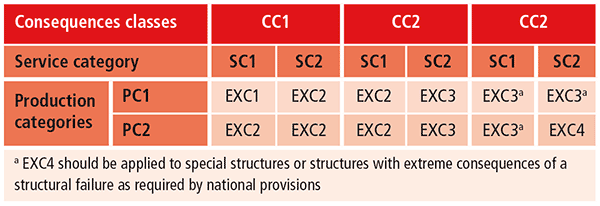
Table 1 – Recommended matrix for determination of execution class (from BS EN 1090-2: 2008+A1: 2011)
Service Categories are used to consider the risk from the actions to which the structure and its parts are likely to be exposed to during construction and use, such as static, fatigue and the likelihood of seismic actions. SC1 relates to static, quasi-static and regions of low seismic actions while SC2 is for fatigue actions according to BS EN 1993-1-9 and regions with medium or high seismic activities.
The Production Categories are used to identify the risk associated with fabrication. PC1 is related to non welded components or welded components made using steel grades below S355 while PC2 is for welded components made using higher grade steels, welding on construction sites, hot forming and thermic treatments during manufacture and components of CHS lattice girders requiring end cuts.
Complete definitions of both Service Category and Production Category are given in Annex B of BS EN 1090-2.
Applying these recommendations to a range of structures leads generally to the following relationship between Execution Class and type of structure:
• Execution Class 1 – Farm buildings
• Execution Class 2 – Buildings in general
• Execution Class 3 – Bridges
• Execution Class 4 – Safety critical structures with a high consequence of failure
Execution Class is used in two ways. Firstly by steelwork contractors to put in place a set of manufacturing process controls that form part of a certified factory production control system for CE Marking fabricated steelwork. This has the effect of dividing the fabrication industry into companies with one of four sets of quality control processes.
These limit the type of structures that each steelwork contractor is allowed to fabricate – e.g. A steelwork contractor
with an Execution Class 2 certified FPC system can only fabricate Execution Class 1 and 2 structures. Clients, specifiers and main contractors can use Execution Class to identify steelwork contractors with the correct level of quality and assurance controls.
Secondly Execution Class is a design issue and is used by designers/specifiers to determine the controls required during fabrication to meet their design assumptions. This second issue is less well known and understood by specifiers and engineers. This is partly because the recommendations on the determination of Execution Class are in the fabrication standard BS EN 1090-2 and partly because the concept is a new one.
To redress this situation the European Committee for Standardisation (CEN) recently issued an amendment to BS EN 1993-1-1: ‘Eurocode 3: Design of steel structures – Part 1.1: General rules and rules for buildings.’ The amendment includes a new Annex C ‘Determination of Execution Class’ which makes it clear that it is the specifier’s responsibility to determine the Execution Class. Annex C also recommends Table 2 (below) for the selection of Execution Class.
This table is different to the one given in Annex B of BS EN 1090-2. Service Category has been replaced by ‘Type of loading’, Production Category has been removed and Execution Class 4 is reserved for ‘structures with extreme consequences of structural failure’.
The other major difference is that the Annex C of BS EN 1993-1-1 is normative and must be used whereas Annex B of BS EN 1090-2 is informative and allows specifiers the freedom to base execution class on their own experience.
Annex C of BS EN 1993-1-1 allows member states to either use Table 2 or recommend an alternative approach in a National Annex. Currently BSI committee CB/203 is discussing the approach to be adopted in the UK National Annex.
Finally both the design standard BS EN 1993-1-1 and the fabrication standard BS EN 1090-2 apply to a much wider range of activities than the harmonised (CE Marking) standard BS EN 1090-1. Consequently, Execution Class also applies to a much wider range of activities and is not limited to those structures that fall within the scope of BS EN 1090-1. For example Execution Class also applies to site activities such as erection, assembly, repairs and modifications.
The concept of Execution Class is relatively new to the majority of the construction industry but it offers the industry a common approach to selecting the right level of quality and assurance controls needed to ensure the structure meets the engineer’s design assumptions.
Further information on how the steel construction sector has been working behind the scenes towards achieving CE Marking is available from the recently updated Steel Construction – CE Marking publication. This spells out in detail what it will mean for the rest of the construction sector and what specifiers need to do to comply with the Construction Products Regulations.
This is available free at: www.steelconstruction.info/Steel_construction_news

